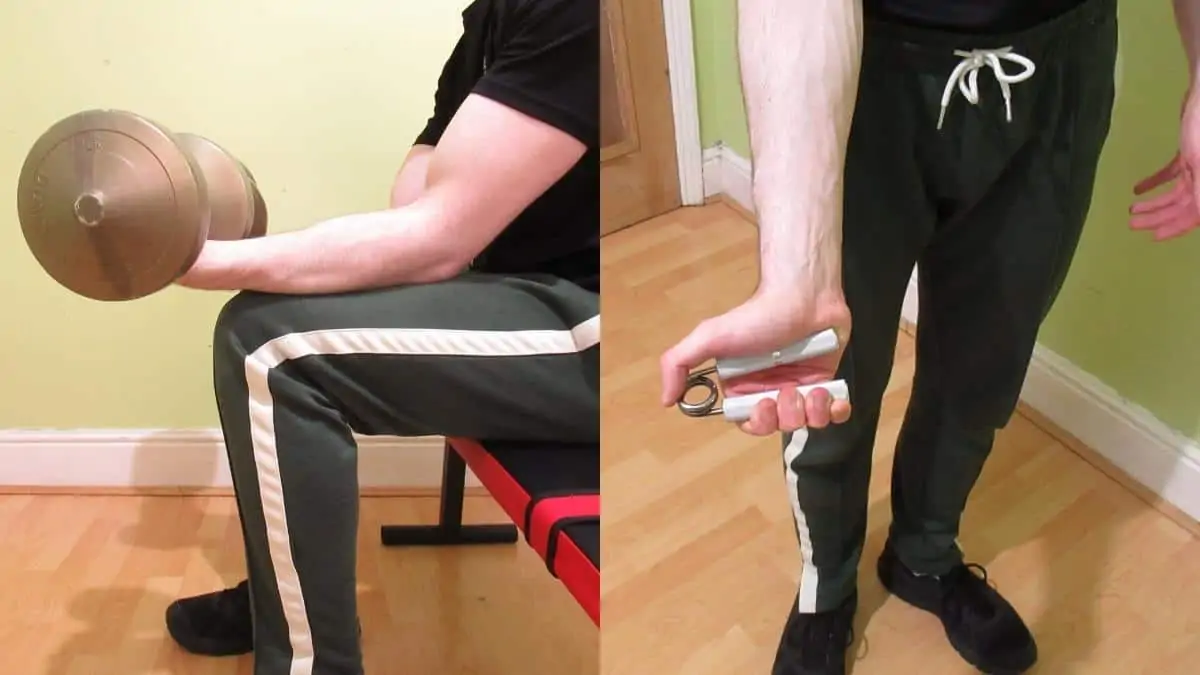Having some meat around your forearm bones can prevent them from becoming injured. However, as a tennis player, strong forearms are particularly important because they help you to maintain a firm grip on the racket and, in turn, generate more swing power.
These 5 forearm exercises for tennis will strengthen your lower arms without hurting your wrists, provided that you use the proper form, which is explained step-by-step in the tutorials below.
Related post: forearm pain from tennis
Top 5 forearm exercises for tennis
Get ready for some of the best forearm workouts of your life. Many tennis players skip forearm training over the fear of hurting their wrists. And however legitimate that fear might be, you can sidestep the issue by perfecting the technique that I’m about to show you.
After all, if you can swing a racket with good technique and score points, then lifting a few weights will be a piece of cake.
1. Wrist curls
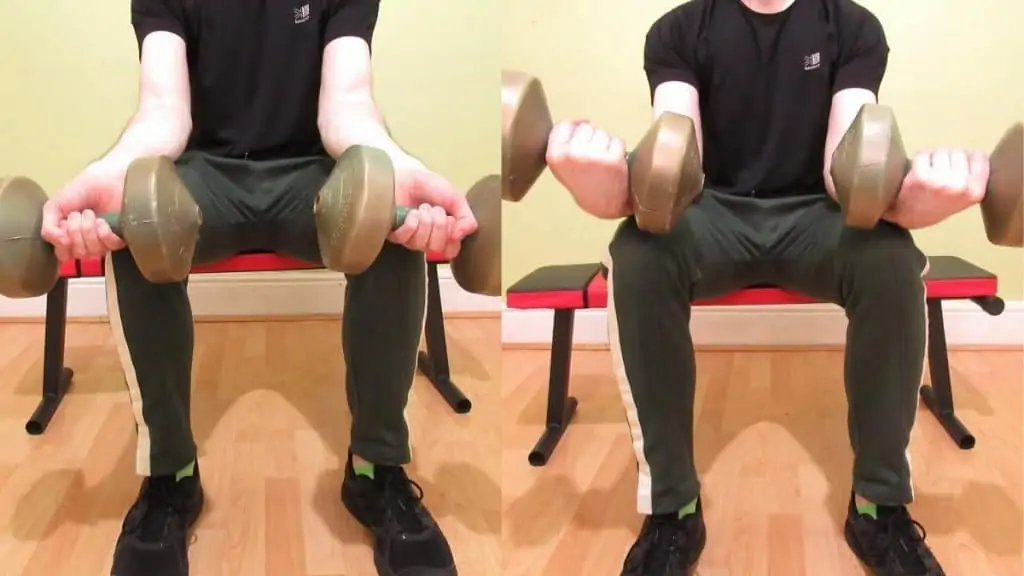
EZ curl bar wrist curls are tough on the forearm flexors but easy on the wrists. The semi-pronated grips put your wrists in a more natural position than regular barbells.
You can also do the behind-the-back barbell wrist curl. However, this exercise setup is somewhat difficult unless you use cables, which I understand not everyone has access to. So the EZ bar it is!
Dumbbells work equally well. The equipment is really just a matter of personal preference and availability.
- Grab an EZ bar just inside shoulder width and then place the tops of your forearms on a bench (or any comfortable flat surface).
- Let your hands hang off the edge.
- Lower the weight towards the floor by bending your wrists.
- Keeping going until you feel a noticeable stretch in the underside of your forearms.
- Bring the bar back up by flexing your forearms. This is one rep.
- Repeat for 2-4 sets of 8-15 reps, and remember to always control the weight on the way down.
2. Reverse wrist curls
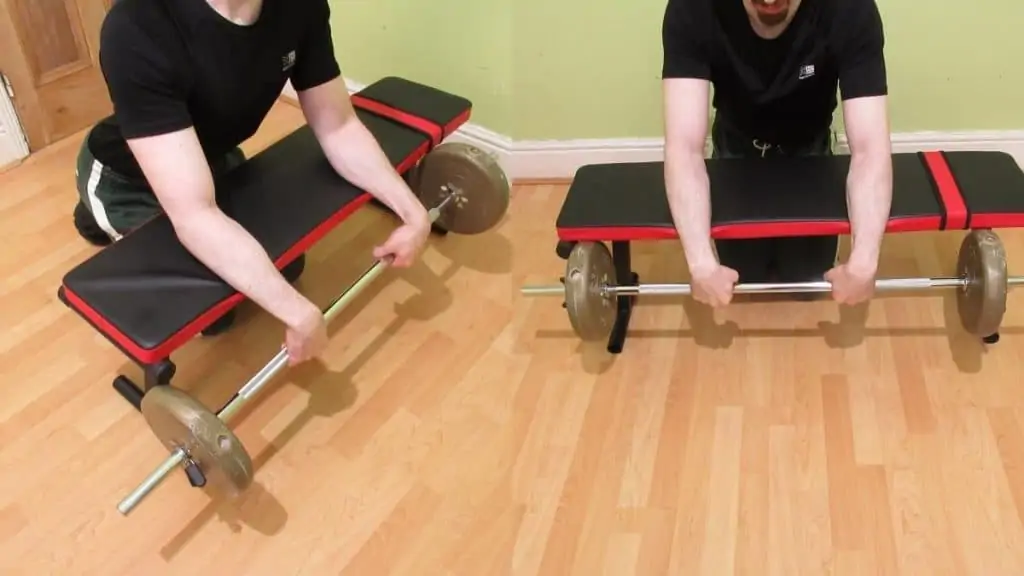
Since most people have underdeveloped forearm extensors (i.e., they never train them), you can get ahead of your competitors on the court by doing reverse wrist curls. By strengthening your extensors, you’ll potentially make them more resistant to muscular sprains that may otherwise occur when swinging the racket. [1]
Just make sure to go very light. I’m using an empty bar for the example, but a pair of 5-15lb dumbbells will also do just fine. This exercise is more about feeling the muscle working rather than setting new records. Save the hard work for the court.
- Hold a light barbell with an overhand grip.
- Place the underside of your forearms on a weight bench and let your hands hand off the edge.
- Lower the weight towards the ground by bending your wrists.
- Descend until you feel a moderate stretch in your extensors.
- Come back up by flexing the tops of your forearms, and be sure to bring the bar higher than where your lower arms and hands are level for a strong contraction.
- Repeat for 2-3 sets of 15-25 reps.
3. Hand grip squeezes
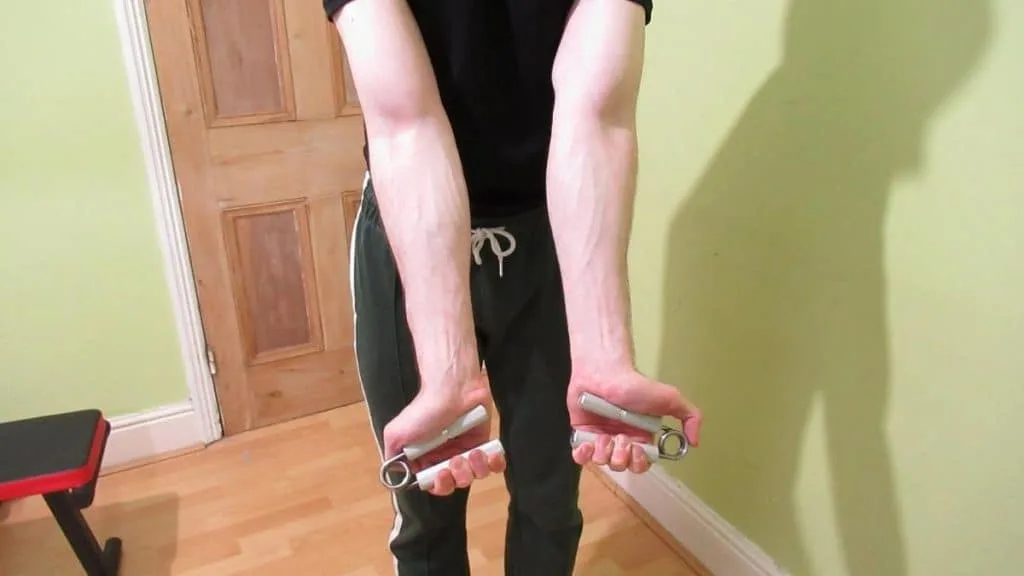
If you don’t have access to weights or a gym, then using a hand grip squeezer is a great way to sneak some forearm work into your tennis training. Of course, you can also do it in addition to other strength training exercises.
- Hold a hand grip trainer between your fingers and the palm of your hand.
- Forcefully squeeze the gripper by pushing your fingers and palm together.
- Keep squeezing until both ends of the gripper touch.
- Slowly release the gripper under control.
- Repeat for 2-4 sets of 8-15 reps.
4. Stress ball squeezes
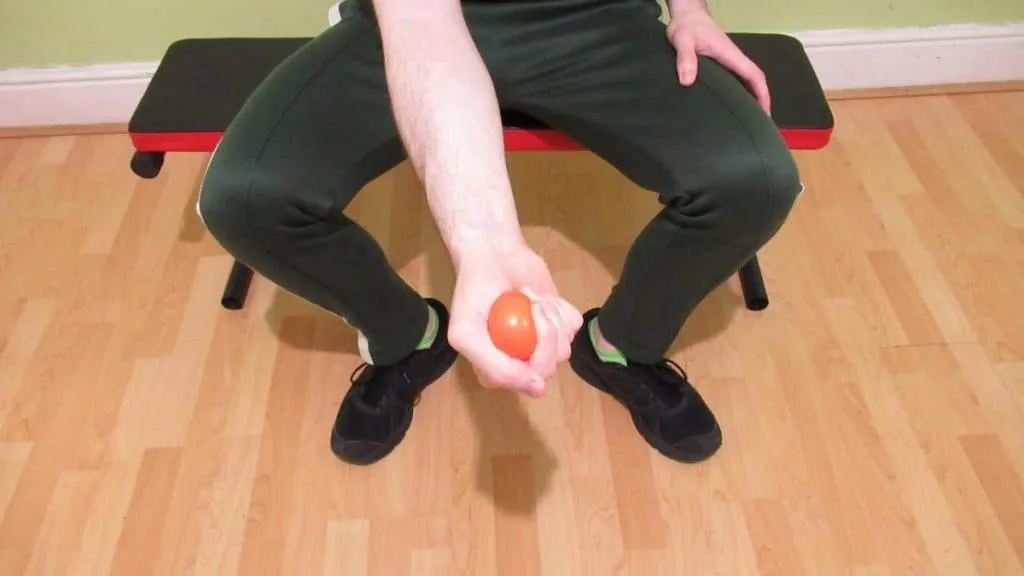
If you don’t (yet) have the forearm strength to squeeze a hand grip trainer, then squeezing a stress ball can help you to work your crucial gripping muscles without overstressing them.
It also makes for an excellent warm-up drill before doing your forearm exercises for tennis. And, you can even do it after a loss to reduce your stress while helping you to avoid the temptation of throwing your racket on the ground!
But please, whatever you do, don’t try to use it as a tennis ball.
- Hold a stress ball in the palm of your hand.
- Squeeze the ball for a second, and then relax your hand.
- Repeat this 20-25 times. That’s one set.
- Do around 2-3 sets in total, and don’t forget your other hand!
5. One arm wrist curl
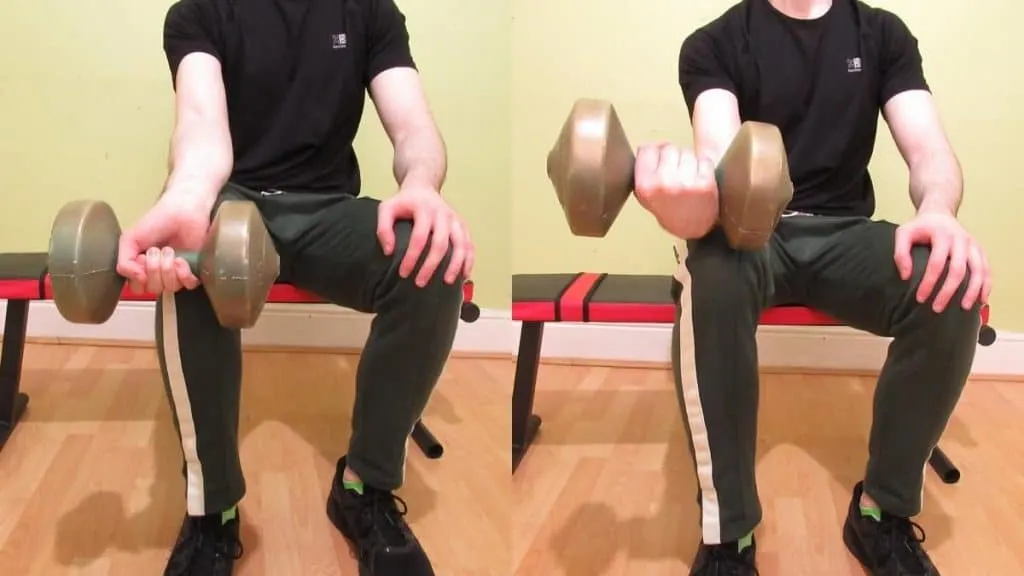
If you have muscle imbalances in your lower arms, then the one arm dumbbell forearm curl will help to even them out. It will also help you to become more adept at generating swing power and control with your weaker arm.
- Hold a dumbbell in one hand and then rest the top of your forearm on a gym bench (or your thigh).
- Allow your hand and wrist to hang off the edge.
- Bend your wrist to lower the dumbbell towards the floor.
- Descend until you feel a deep yet comfortable forearm stretch.
- Come back up by squeezing your forearm flexors.
- Hold the contraction for a split second and then repeat for 2-3 sets of 10-15 reps.
You can do this exercise with your palms down to work your extensors, too.
How important are wrist and forearm exercises for tennis?
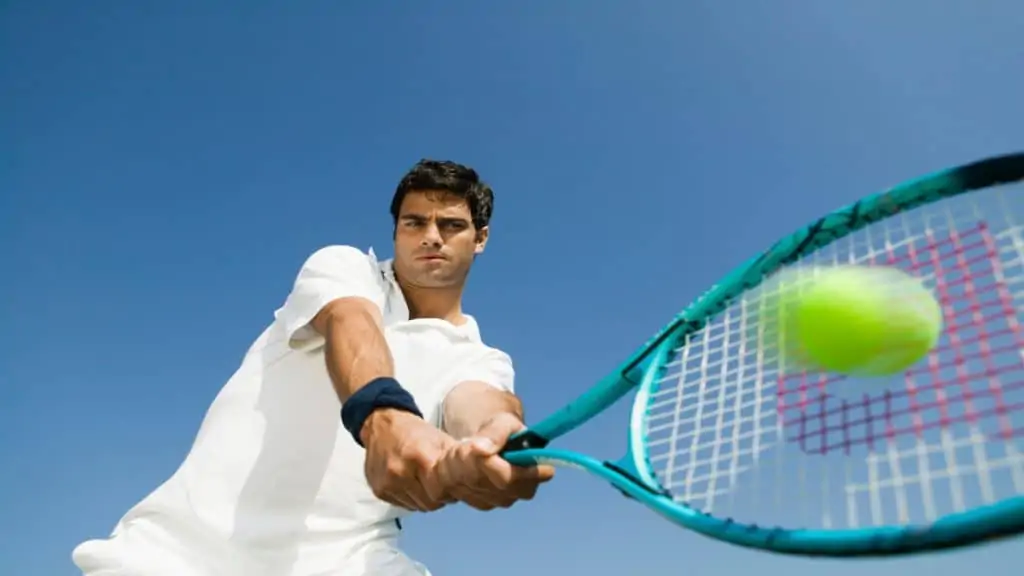
I’m no Djokovic, but there’s no denying that strong lower arms can benefit you in tennis. Not only do they help you to control your wrists—keep them straight, bend them, etc.—but they also help you to maintain a firmer grip on your racket. [2]
This is important because your grip is the last point in the kinetic chain. So if it’s weak, then you won’t be putting maximum power on your swing. Obviously, there’s no need to grip the racket as hard as you can on every swing. Otherwise, your forearms might fatigue and give out.
Still, doing forearm exercises for tennis will help to strengthen your grip and enhance your endurance by giving your lower arms a higher work capacity (vital for long matches).
See also
The verdict on the various forearm exercises for tennis
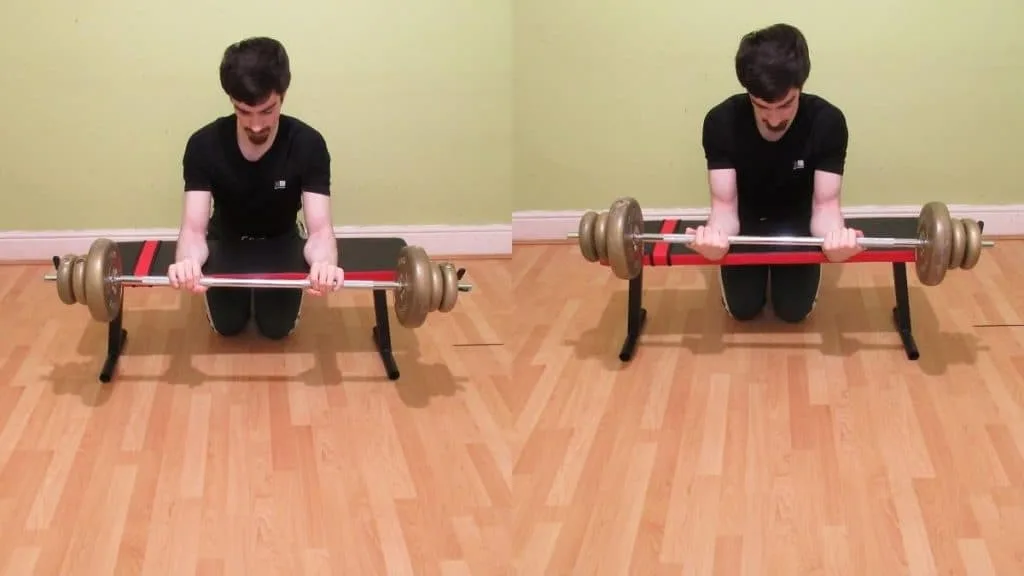
In closing, pick one regular and one reverse-grip exercise. This way, you’re working both your forearm flexors and your forearm extensors.
You can also do reverse curls (bicep curls with an overhand grip) to work your brachioradialis, which is another crucial lower arm muscle for tennis performance.
Other than this simple guideline, there are no magic forearm exercises for tennis. However, I do think that stress ball squeezes are an underrated drill. After all, the best tennis players don’t always have the biggest forearms. They do, however, have great control over their forearms, wrists, and hands.
References
- Ellenbecker, T. S., Pluim, B., Vivier, S., & Sniteman, C. (2009). Common Injuries in Tennis Players: Exercises to Address Muscular Imbalances and Reduce Injury Risk. Strength and Conditioning Journal, 31(4), 50–58. https://doi.org/10.1519/ssc.0b013e3181af71cb
- Shrier, I. (2008). The Effect of Tennis Racket Grip Size on Forearm Muscle Firing Patterns. Yearbook of Sports Medicine, 2008, 57–58. https://doi.org/10.1016/s0162-0908(08)79118-9
- Ben Wolfe. (2019, August 11). Strengthening Your Wrists and Forearms for Tennis [Video]. YouTube. https://www.youtube.com/watch?v=v2NlvQAtEE8

